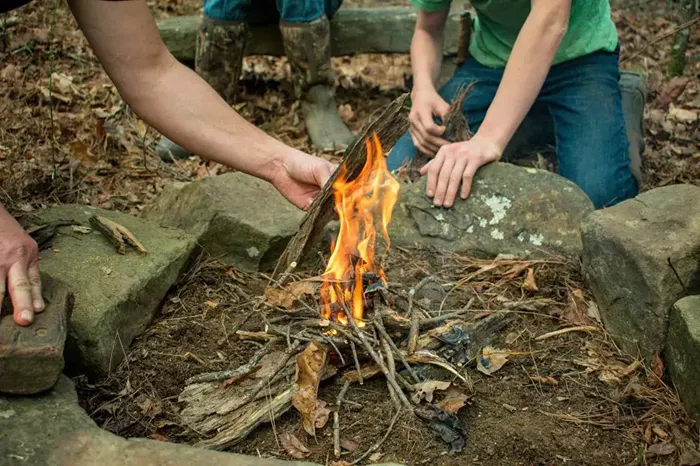Starting a campfire is an essential skill for any outdoor enthusiast. Whether you’re cooking, staying warm, or just enjoying the ambiance, a well-built fire can make your camping trip more enjoyable. In this guide, we’ll break down the process into simple steps, ensuring even beginners can master it.
Why Learning to Build a Campfire is Important
A campfire provides:
- Warmth on cold nights
- Light in the dark
- A cooking source for meals
- A social center for storytelling and bonding
But building a fire incorrectly can be dangerous. Follow these steps to do it safely and efficiently.
Check Local Regulations and Safety Rules
Before starting a fire:
- Verify if fires are allowed: Some areas ban fires due to dry conditions.
- Use existing fire rings: If available, use designated spots to minimize environmental impact.
- Keep water or sand nearby: Always have a way to extinguish the fire quickly.
- Avoid windy days: Strong winds can spread flames uncontrollably.
Gather the Right Materials
A successful fire needs three types of fuel:
Tinder (Easy to Ignite)
- Dry leaves
- Grass
- Birch bark
- Cotton balls soaked in petroleum jelly (fire starters)
Kindling (Small Sticks)
- Twigs (pencil-thick)
- Small branches
- Split wood pieces
Firewood (Sustains the Fire)
- Dry, seasoned logs
- Hardwoods (oak, maple) burn longer
- Softwoods (pine, cedar) ignite faster but burn quickly
Pro Tip: Collect more than you think you’ll need—running out of fuel is a common mistake.
Choose a Fire Structure
Different fire structures serve different purposes:
Teepee Fire (Best for Quick, Hot Flames)
- Place tinder in the center.
- Arrange kindling in a cone shape around it.
- Add larger logs as the fire grows.
Log Cabin Fire (Long-Lasting, Stable)
- Stack two larger logs parallel.
- Place two more on top perpendicularly.
- Fill the center with tinder and kindling.
Lean-To Fire (Good for Windy Conditions)
- Place a thick log as a wind barrier.
- Lean kindling against it.
- Place tinder underneath.
Light the Fire Safely
- Use a lighter, matches, or fire starter.
- Light the tinder from multiple sides for even burning.
- Gently blow at the base to increase oxygen flow.
- Gradually add larger kindling as the fire grows.
Avoid using gasoline or alcohol—these can cause dangerous flare-ups.
Maintain and Extinguish the Fire
- Add logs carefully to avoid smothering flames.
- Keep the fire at a manageable size—huge fires are harder to control.
- Fully extinguish before leaving—drown with water, stir ashes, and repeat until cold.
Troubleshooting Common Fire-Starting Problems
Problem: Fire Won’t Catch
Solution: Use drier tinder or more kindling.
Problem: Fire Burns Out Quickly
Solution: Add thicker logs gradually.
Problem: Too Much Smoke
Solution: Ensure wood is dry and properly spaced for airflow.
Conclusion
Building a campfire is simple if you follow these steps. Always prioritize safety, use the right materials, and choose the best fire structure for your needs. With practice, you’ll be able to start a fire effortlessly on every camping trip.
Now, grab your gear, head outdoors, and enjoy the warmth of a well-built campfire!
Would you like recommendations for the best fire-starting tools? Let me know in the comments!
Related topics:
How to Easily Start a Campfire
What Is a Good Starter Camper?
When Is It Safe to Build a Campfire?

